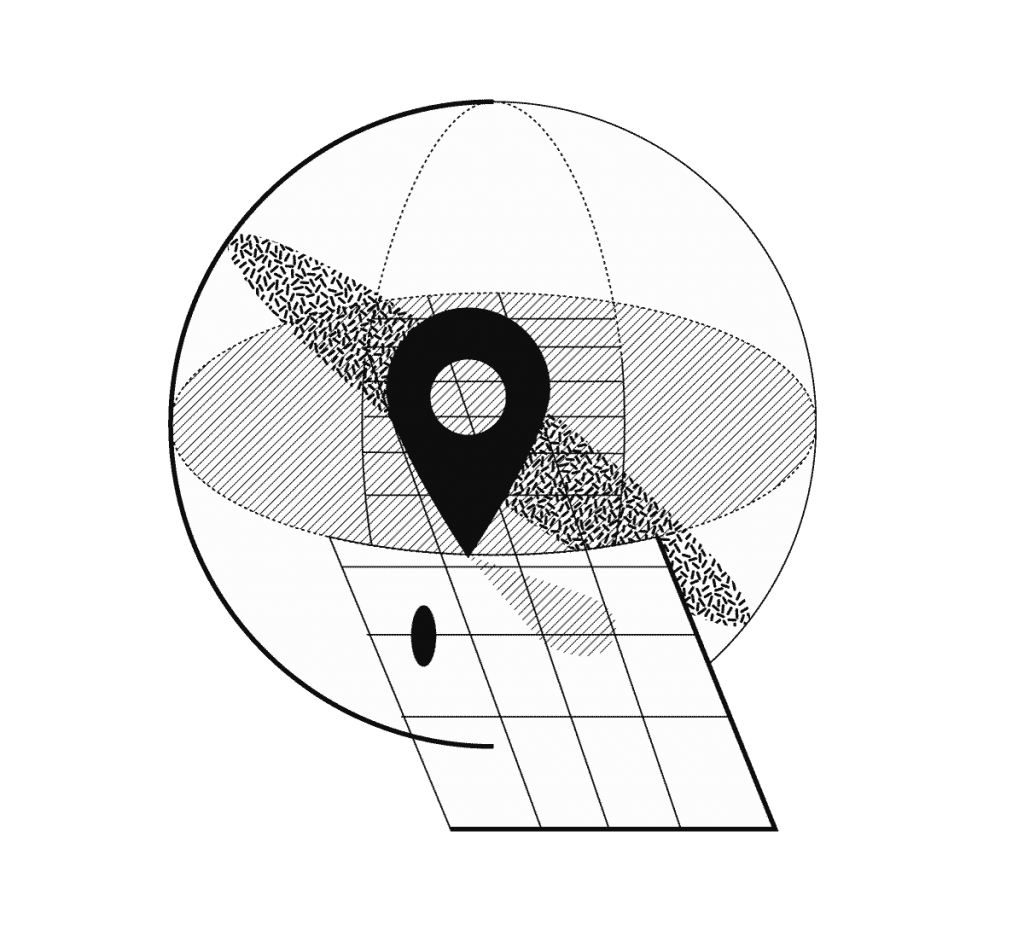The Position of a Cartopologist and the Map as a Research Instrument
To explore the richness of borders, a specific approach is adopted: that of the cartopologist. A cartopologist joins the narrative of the lived reality and the physical place. Cartopological maps find themselves at the intersection of two families of disciplines: those born from a spatial perspective (architecture, urban planning and cartography) in which the use of plans based on standardized notational systems are pushing narrative and nearness into the background and those born from a fascination for human behaviour and interaction (ethnography and anthropology) where the one-direction nature of a written outcome minimizes the active experience of space.1The development of Cartopology as a research field is in full expansion as team member Marlies Vermeulen is conducting a PhD research on Cartopology. Vermeulen shares her research project on www.cartopology.institute.

Cartopologists are looking for the extent to which spaces are inhabited and make up the day to day. It is a search for knowledge that is not immediately written down or told at first, but is rather hidden in habits and embodied in actions dealing with places that it is taken for granted.2Stefan Hirschauer, Putting things into words. Ethnographic description and the silence of the social, 413-441. Cartopological maps support the cartopologist as they take the role of a research instrument, calibrating cartopologists in their role of participant-observers. It is a way in which you collect thoughts, experiences, ideas and reflections not only by observing the research location and the participants, but also by actively engaging with that location and the activities that take place on that location. This demands from the cartopologist to take the brave position of not knowing, having trust in the estrangement and susceptibility as a curious researcher to become integrated into the participants’ environment while simultaneously mapping what is going on.3Ruth Benschop, De eland is een eigenwijs dier. Een gedachtenexperiment over praktijk en relevantie van artistiek onderzoek.
As such, the cartopologist embarks on fieldwork to search for knowledge hidden on location, while the map shelters this messy process providing a platform to document and localise these experiences at the same time.4John Law, STS as Method.
Using the cartopological map as a research instrument allows the cartopologist to continuously train craftmanship and cunning in order to embrace the making and doing aspect of cartopological- and artistic research. The way the cartopological map instructs the cartopologist to collect material allows and invites to restructure and classify the research process regularly. For cartopologists it is part of their practice to share the map as a collection, rather than a purified, stylised and edited discourse. As such, the cartopological map is as much a result as the process itself.5Tim Ingold, Making: Anthropology, archaeology, art and architecture.
The cartopological approach in Border Encyclopedia departs from the existing one-sided maps that are traditionally used to represent border regions in order to investigate a more diverse, local and performative representation of the border.
[1] The development of Cartopology as a research field is in full expansion as team member Marlies Vermeulen is conducting a PhD research on Cartopology. Vermeulen shares her research project on www.cartopology.institute
[2] Stefan Hirschauer, Putting things into words. Ethnographic description and the silence of the social, 413-441.
[3] Ruth Benschop, De eland is een eigenwijs dier. Een gedachtenexperiment over praktijk en relevantie van artistiek onderzoek.
[4] John Law, STS as Method.
[5] Tim Ingold, Making: Anthropology, archaeology, art and architecture.
